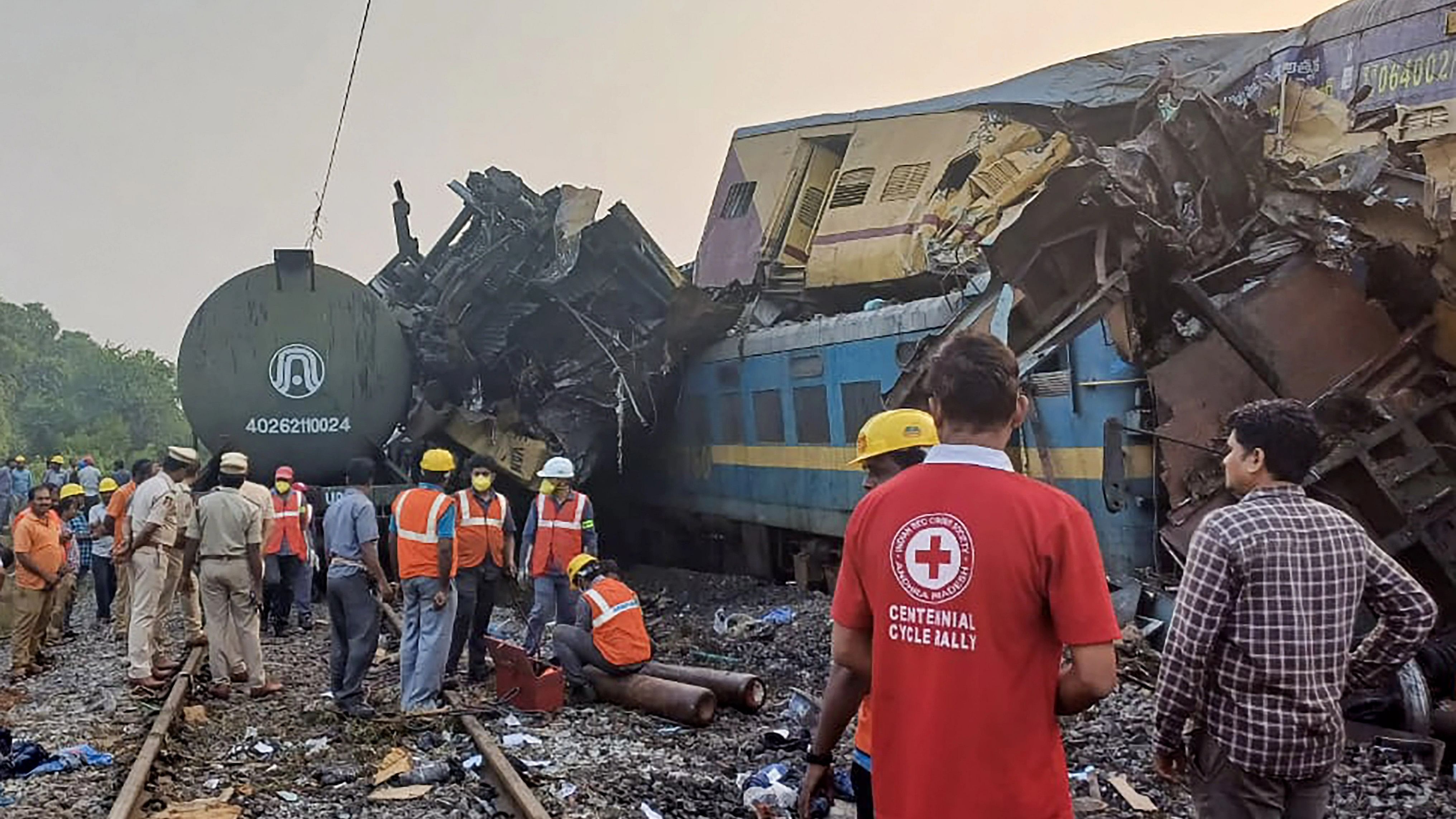
NDRF personnel carry out rescue and restoration work after multiple coaches of two passenger trains derailed following a collision, in Vizianagaram district.
Credit: PTI Photo
Yet another train accident, this time in Andhra Pradesh, has again exposed the vulnerability of the railways. A collision between two passenger trains on the Howrah-Chennai line in Vizianagaram on Sunday claimed 14 lives and left many people injured. Earlier this month, the Anand Vihar-Kamakhya North-East Express derailed in Bihar causing four deaths. In June this year, the country witnessed one of its worst train accidents when three trains collided in Balasore in Odisha killing over 290 people. There are minor mishaps occurring frequently in many parts of the country that do not get reported but have an impact on services and railway assets. In spite of discussions and examination of the causes of accidents every time one occurs, accidents keep happening. The Vizianagaram accident happened reportedly because of human error. The driver of one of the trains is reported to have missed the red signal and hit the other train, causing derailment of five bogies.
There are several factors that contribute to train accidents and the railways is prone to most of them. Defective or deficient infrastructure, technological inadequacy, unmanned crossings and human errors are some of them. The Anil Kakodkar Committee had over a decade ago recommended a slew of measures to upgrade infrastructure in order to improve safety. Huge investments are needed to implement the measures. The Bibek Debroy Committee and the Vinod Rai Committee have also made a number of recommendations like setting up an independent railway safety authority and an infrastructure authority. Indian Railways has announced that it has indigenously developed an automatic train protection system known as ‘Kavach’ to prevent accidents due to human error and that it would be implemented in a phased manner. It has so far been deployed only on 1,465 km out of over one lakh km of tracks in the country. At the current pace, it will take many years for the entire system to be covered. There is a need to shift focus to safety and speed up installation of Kavach and other technologies.
The launch of the high-profile Vande Bharat and Namo Bharat trains shows the ambition towards refurbishing the Railways’ image and gain glamour. Speedier and better trains are needed, but they cannot perform to potential on unsafe tracks and technology. It is important to ensure safety of travel in the large number of other trains, including ordinary passenger trains, in which the vast majority of people travel. Collisions and derailments have caused much loss of lives and assets. The causes of accidents and the remedial measures are known, and it is the responsibility of Railways and the government to ensure the safety of the millions of passengers who travel every day.